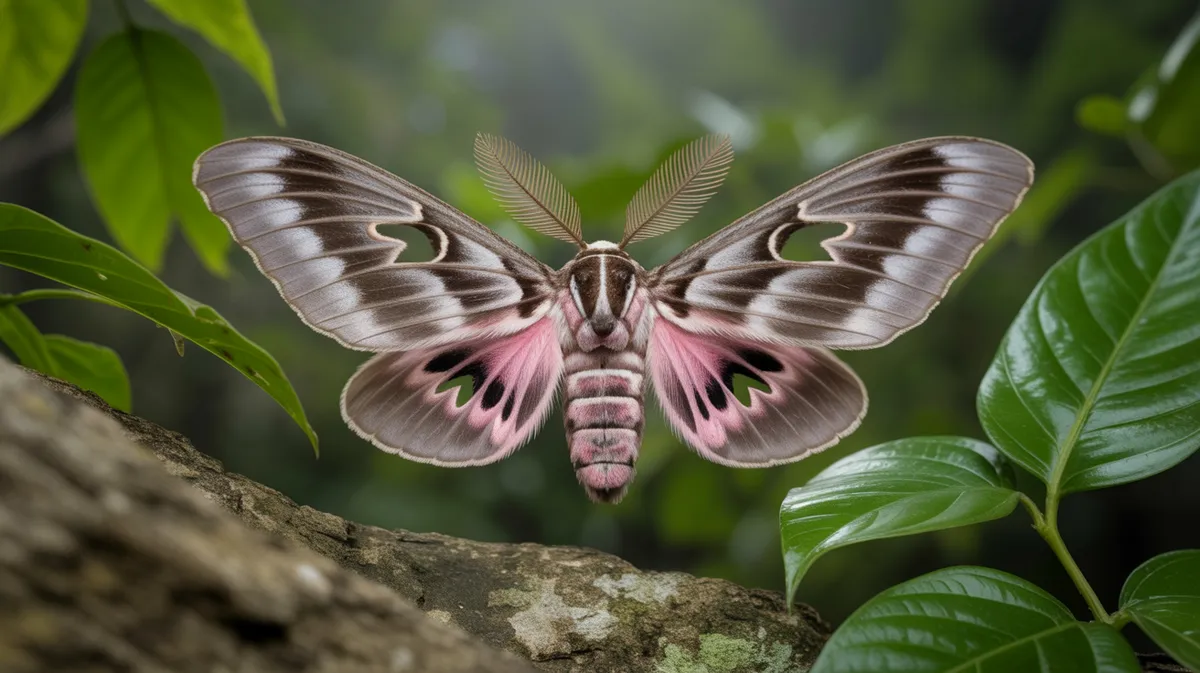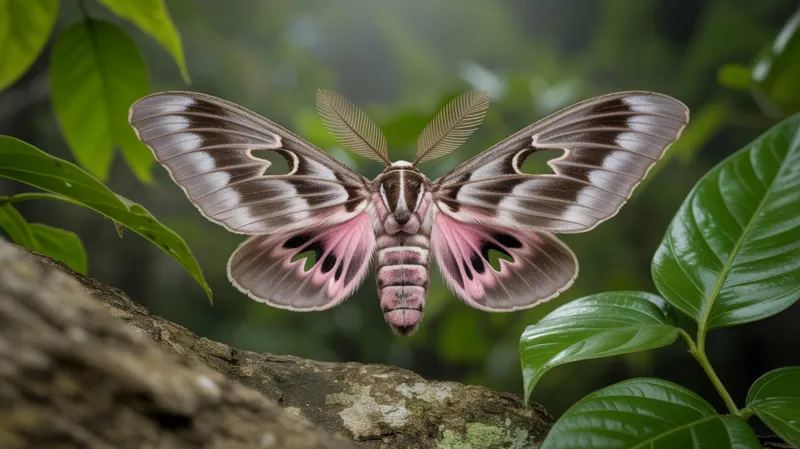
Venezuelan poodle moth
Artace sp.

Meet the Venezuelan poodle moth
The Venezuelan poodle moth is a mysterious and visually striking moth species first discovered in Venezuela in 2009. Characterized by its fluffy, poodle-like appearance, it has dense white or grayish scales covering its body and wings, giving it a soft, fuzzy look. Its large, feathery antennae and stout body make it distinct among moths, leading to significant interest and speculation among entomologists. Due to its recent discovery and limited observations, much about its behavior, ecology, and even precise classification remains unknown.
Classification
Invertebrate
Habitat
Montane forest
Diet
Herbivore
Lifespan
1-2 weeks (adult stage)
Conservation
Data Deficient
Weight
Less than 1 gram
📖Fascinating Facts
Recent Discovery
The Venezuelan poodle moth was first described by Dr. Arthur Anker in the Gran Sabana region of Venezuela in 2009.
Forest Dweller
It is believed to inhabit montane and tropical forests, especially areas with high humidity and rich plant life.
Uncertain Classification
While it is tentatively assigned to the genus Artace, its exact species and relationships within the family Erebidae remain uncertain.
📋Detailed Description
The Venezuelan poodle moth (Artace sp.) is a visually distinctive lepidopteran, notable for its dense, woolly covering of white or pale gray scales that envelop its body, legs, and wings, giving it a plush, poodle-like appearance. Adult moths are estimated to have a wingspan of approximately 35–40 mm, with a robust, compact body adapted for short, fluttering flights. The head is adorned with large, bipectinate (feather-like) antennae, which are likely highly sensitive to pheromones and play a key role in mate location. The eyes are relatively large, providing enhanced nocturnal vision. The forewings are broad and rounded, while the hindwings are slightly shorter, both covered in dense scales that may serve as camouflage or insulation. The legs are also covered in setae (hair-like structures), which may aid in sensory perception and protection against predators or environmental hazards. The larval stage, though undocumented for this species, is presumed to resemble other Artace caterpillars, which are typically covered in urticating hairs that deter predators. Behavioral observations suggest the moth is primarily nocturnal, being most active during the night and attracted to artificial light sources. Its montane forest habitat in Venezuela suggests adaptation to cool, humid environments, with adults likely emerging during the rainy season when host plants are most abundant.
💡 Did you know?
Despite widespread internet fame, very few specimens of the Venezuelan poodle moth have ever been studied, and its exact taxonomic identity is still debated by scientists.
🔬Research & Sources
Wikipedia Summary
Artace is a genus of moths in the family Lasiocampidae. The genus was erected by Francis Walker in 1855.
Last Modified: 4/29/2025
🎭Behavior & Social Structure
The Venezuelan poodle moth is presumed to be solitary, with adults engaging in limited social interaction outside of mating. As with most Lasiocampidae, adults are likely to be weak fliers, remaining close to vegetation and using short flights to locate mates or oviposition sites. Feeding behavior in adults is poorly documented, but many related species have reduced or non-functional mouthparts and do not feed, relying on energy reserves accumulated during the larval stage. If feeding does occur, it is likely restricted to nectar or plant exudates. Larvae of related Artace species are herbivorous, feeding on the leaves of various woody plants, and may exhibit cryptic or aposematic coloration. Daily routines are dominated by periods of inactivity during daylight hours, with peak activity occurring after dusk. Defensive behaviors may include remaining motionless, dropping from perches when disturbed, or relying on their dense setae for protection.
👶Reproduction & Life Cycle
Reproductive behavior in the Venezuelan poodle moth is inferred from related Lasiocampidae. Mating is likely initiated through pheromone signaling, with females releasing volatile compounds to attract males over considerable distances. Courtship is brief, and copulation occurs on vegetation. Females are expected to lay clusters of eggs on the underside of host plant leaves, with oviposition occurring shortly after mating. The incubation period for eggs in related species ranges from 7 to 14 days, depending on temperature and humidity. Larvae undergo several molts (instars) before pupating, typically within a silken cocoon constructed among leaf litter or attached to branches. There is no parental care beyond egg-laying. The breeding season is likely synchronized with the onset of the wet season, maximizing larval food availability.
🛡️Adaptations & Survival
Key adaptations of the Venezuelan poodle moth include its dense, woolly scales, which provide insulation against the cool, moist montane environment and may deter predators by mimicking fungal growth or unpalatable organisms. The bipectinate antennae enhance chemical detection, crucial for locating mates in dense forest habitats. Larval urticating hairs, if present, serve as a potent defense mechanism against vertebrate and invertebrate predators. The moth's cryptic coloration and fuzzy appearance may also disrupt its outline, providing camouflage among lichens and mosses. Nocturnality reduces predation risk from diurnal birds and increases mating opportunities. Rapid development and synchronized emergence with seasonal plant growth optimize reproductive success.
🎨Cultural Significance
Since its discovery in 2009, the Venezuelan poodle moth has captured public imagination, becoming an internet sensation due to its unusual, almost mammalian appearance. It is frequently featured in popular media, art, and online discussions about biodiversity and the wonders of the natural world. While there are no records of traditional uses or specific roles in Venezuelan folklore, its unique appearance has made it a symbol of the unexplored diversity of tropical forests and the importance of scientific discovery.
🔬Recent Research & Discoveries
The Venezuelan poodle moth remains poorly studied, with most knowledge derived from a single photographic record by Dr. Arthur Anker in 2009. Ongoing research focuses on clarifying its taxonomic status within the genus Artace, as DNA barcoding and morphological analysis are needed to determine whether it represents a new species or a variant of a known Artace species. Entomologists are also interested in its ecological role, larval host plants, and potential adaptations to montane environments. Recent studies in related Lasiocampidae have highlighted the importance of larval defensive strategies and adult pheromone communication, which are likely relevant to this species. Increased field surveys and genetic studies are recommended to address knowledge gaps and inform conservation strategies.
🎥Wildlife Videos

The Venezuelan Poodle Moth: A Fascinating Creature
"Meet the Venezuelan Poodle Moth – a creature that looks like it jumped straight out of a fantasy movie! First discovered in 2009, ...
Nature & Wildlife

Venezuelan Poodle Moth - Animal of the Week
This week we're looking at a very strange animal that may or may not really exist - the Venezuelan Poodle Moth. Join our Discord ...
Ben G Thomas

The Venezuelan Poodle Moth: Real-Life 'Pokemon' with a Soundproofing Fur Secret!
Credit: Poodle Moth: John Flannery, CC BY-SA 2.0 https://creativecommons.org/licenses/by-sa/2.0/, ...
BRIGHT SIDE

The Fascinating Mystery of the Venezuelan Poodle Moth
Join us on a fascinating journey into the mysterious world of the Venezuelan poodle moth! Discovered in 2009 by Dr. Arthur Anker ...
FANIMALHUB

Poodle Moth | Wildlife Documentary | Informative #wildanimals#wildbirds#seaanimals#animals#wildlife
Poodle Moth | Wildlife Documentary | Informative #wildanimals#wildbirds#seaanimals#animals#wildlife ...
Animals World.official

Poodle Moth 🦋 A Unique Animal You Have Never Seen!
The poodle moth is a rare and little-known species of moth that was first discovered in 2009 in Venezuela. It is known for its ...
1 Minute Animals
🌍Habitat Information
The Venezuelan poodle moth typically inhabits Montane forest environments. Venezuelan poodle moths have adapted to their environments with specialized features and behaviors.
Primary Habitat:
Montane forest
More detailed habitat information will be available soon.
🛡️Conservation Status
The Venezuelan poodle moth is currently classified as Data Deficient. Conservation efforts are crucial for preserving this species for future generations.
Common Threats:
- 🏠Habitat loss and fragmentation
- 🌡️Climate change impacts
- 🎯Hunting and poaching
- 🏭Human-wildlife conflict
⚠️Threats & Conservation Challenges
The Venezuelan poodle moth faces several potential threats, primarily habitat loss due to deforestation, agricultural expansion, and climate change affecting montane forest ecosystems. Its apparent rarity and restricted range increase vulnerability to stochastic events and environmental changes. Light pollution may disrupt natural behaviors, including mating and navigation. The lack of comprehensive population data and ecological studies complicates conservation assessment, and the species is currently classified as Data Deficient. There is no evidence of targeted collection or trade, but its striking appearance could attract interest from collectors if populations were better known.
🔬Scientific Classification
Scientific Name
Artace sp.
Classification Hierarchy
🔍 About Taxonomic Classification
Taxonomic classification is a hierarchical system used by scientists to classify and organize living organisms based on shared characteristics and evolutionary relationships.
The system moves from broad categories (Kingdom) to increasingly specific ones, with each animal's scientific name typically consisting of its Genus and species.
📝Community Notes
Share your observations and insights about the Venezuelan poodle moth with our community of wildlife enthusiasts.
Join Our Community
Sign in to share your observations and connect with fellow wildlife enthusiasts.
Sign In to ContributeNo community notes yet
Be the first to share your observations about the Venezuelan poodle moth!
Explore Venezuelan poodle moth
Select a tab above to learn more about this amazing animal.
📸Photo Gallery
No photos available for this animal yet.
🌟Discover More Wildlife
Continue your journey of discovery with more fascinating animals from our database
